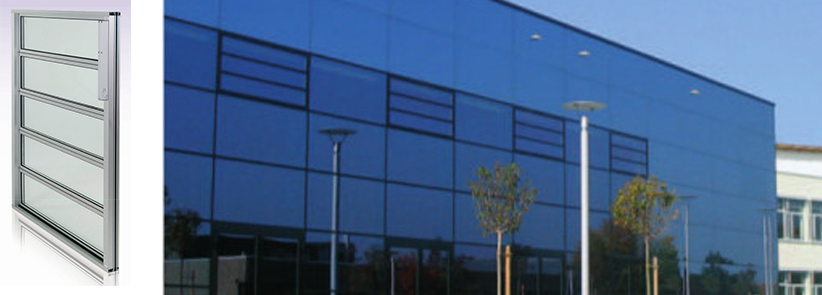Principle of operation
The two forces affecting the extraction efficiency and therefore the design of natural ventilation systems are thermal currents within a building and the effects of the wind external to the building. Of these two the thermal currents, which are created by the heat from plant or personnel inside the building, or by solar heat transferred through the structure, are the predictable factor.
The force provided by the wind is less predictable. The possibility of no wind at all on some of the hottest days when ventilation requirements are greatest, will have an effect on the degree of cooling that can be provided through natural ventilation. Consequently, Element Control Systems ventilation design has placed emphasis on the use of thermal currents. This is achieved by providing the largest possible exhaust opening in relation to the overall size of the ventilator.
Siting of exhaust openings in both the top and sides of the ventilator can also ensure that resistance to upward air flow is reduced to a minimum, allowing warm air to be extracted from the building quickly and efficiently.
Buoyancy
Buoyancy ventilation may be temperature induced (stack ventilation), this relies on the increased buoyancy of the humid air as it warms to expel air from a space above. Buoyancy results from the difference in air density. The density of air depends on temperature and humidity, cool air is heavier than warm air at the same humidity and dry air is heavier than humid air at the same temperature. Within a factory or commercial building, heat and humidity is given off by occupants and other internal sources. These factors create conditions that result in warm humid air rising. The stale, heated air escapes from openings in the ceiling or roof and permits fresh air to enter lower openings to replace it. Stack effect ventilation is an especially effective strategy in the summer months, when the indoor/outdoor temperature difference is at a maximum.
Smart building design that utilises the advantages of a natural ventilation solution will help to provide a comfortable working environment conducive to improved employee productivity along with general staff satisfaction.
Benefits of Natural Ventilation
At a time when power costs are escalating and a responsible approach to C02 emissions a consideration in the design of all new constructions, a natural ventilation solution will address a number of areas, including a responsible approach to environmental challenges by limiting power usage and thus reducing cost.
Element Control Systems offer unique and engineered design solutions with a series of operable and fixed ventilation products for roof and wall applications
Open Sky – A highly efficient attractive low profile louvred natural ventilator specifically designed for smoke and heat exhaust and natural ventilation applications. Can be roof or wall mounted for exhaust or air inlet.
Sky Vent – A High quality single and twin flap ventilator designed for both smoke and natural ventilation requirements. Its low profile design offers the ideal solution for modern industrial and commercial buildings.
PGV – Glassed vertical louvre ventilator that is used for both natural and smoke ventilation purposes it comes with either double glazing or insulated panels
For detailed specifications and further applications click on the Brochures button below.
